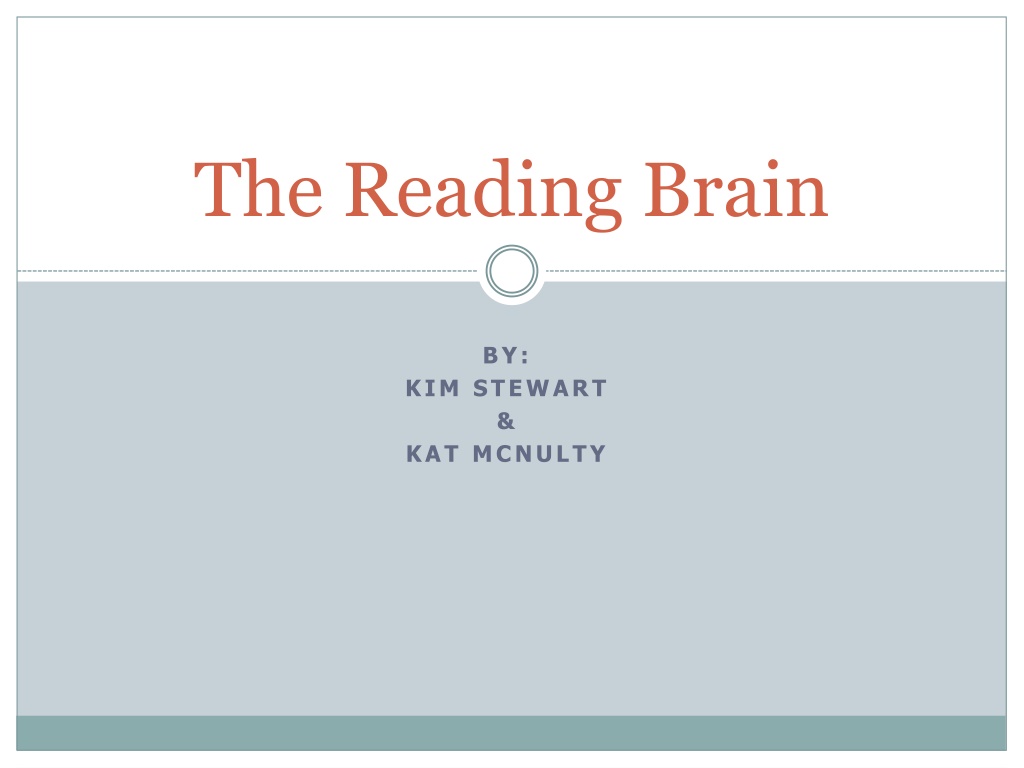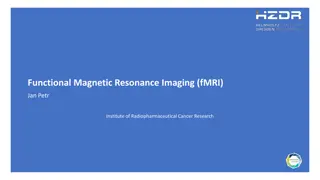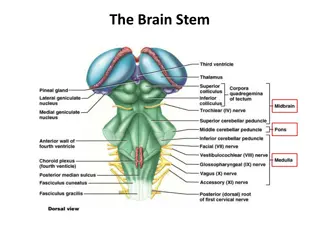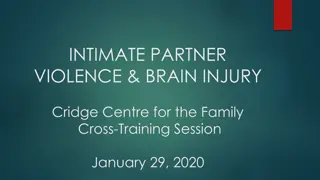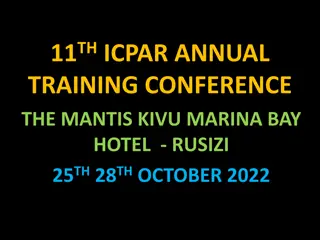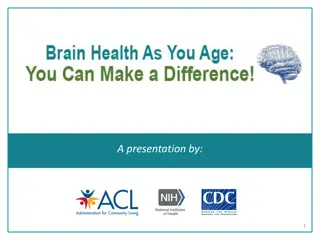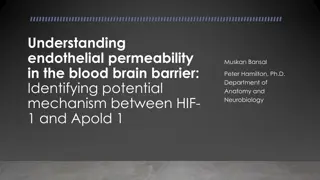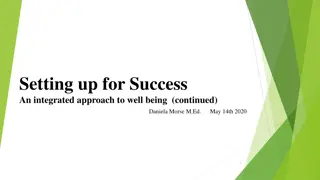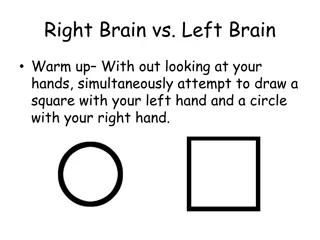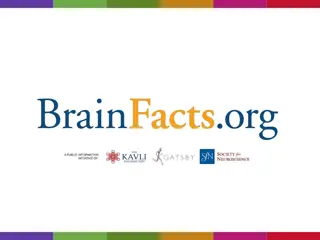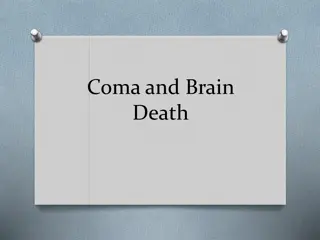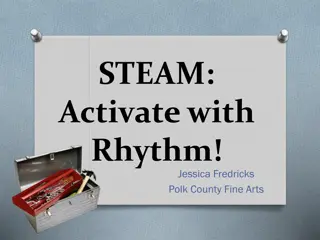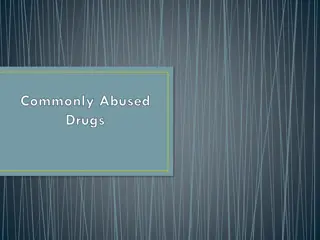Understanding the Reading Brain: From Definition to Function
Explore the fascinating world of reading through the lens of neuroscience. From defining reading to uncovering how our brain processes words, this content delves into the intricate mechanisms behind this vital skill. Discover the two key routes in the brain responsible for decoding letters and connecting words to meanings, shedding light on the complexities of the reading process.
Download Presentation

Please find below an Image/Link to download the presentation.
The content on the website is provided AS IS for your information and personal use only. It may not be sold, licensed, or shared on other websites without obtaining consent from the author. Download presentation by click this link. If you encounter any issues during the download, it is possible that the publisher has removed the file from their server.
E N D
Presentation Transcript
The Reading Brain BY: KIM STEWART & KAT MCNULTY
Outline Activity: Brainstorm, What is the definition of reading to you? and What is reading? Definition of reading New cultural invention Parts of the Reading Brain Activity: Color Confusion 10 minute break Activity: Testing your reading How the Reading Brain is studied Stages of reading Dyslexia
Brainstorming On the paper provided, brainstorm: What do you think is the definition of reading? What do you think reading is?
What is reading? Reading: is the ability to understand written dialogue. It is also the ability to translate written language into internal dialogue. Example: When reading Harry Potter, you imagined how Dobby sounded based on the written dialogue you were reading.
Its New! We are not born to read, but instead we are like computer programs. We are born knowing how to breath, but we must learn how to read.
Parts of the Reading Brain When we read, our brain is taking two functions and streamlining them into one function. Phonological route decodes letters, making them into sound patterns. This route relies on the left hemisphere posterior temporoparietal brain region.
Temporoparietal Brain Region https://upload.wikimedia.org/wikipedia/commons/thumb/4/41/Temporoparietal_junction_diagram.jpg/250px-Temporoparietal_junction_diagram.jpg We use this route to identify words such as cat (c-a-t). https://en.wikipedia.org/wiki/Temporoparietal_junction
Parts of the Reading Brain Cont The second route, engages the left hemisphere posterior occioitotemporal brain region. This allows us to jump from word to meaning, and is the sight word part of the brain.
Occioitotemporal Brain Region https://encrypted-tbn0.gstatic.com/images?q=tbn:ANd9GcR3MJXYWtvzUv8UKQTuyHJ7GhHnpRUvTl1yio71mQ8RztClAESk We engage this for sight words. Example: yacht We do not say y-a-c-h-t. https://www.youtube.com/wat ch?v=5kB7GgLlR7M
Rhyme Detection Read aloud: Bat and Cat Fat and Bat Mat and Sat Pat and Dog If you were attached to a functioning neuroimaging machine, we could tell that there would be a millisecond of a delay.
Parts of the Brain Cont When experiencing left hemisphere brain strokes, two different impairments can occur. 1) Injuring the phonological route means you cannot read words that need to be sound out, but you can still read sight words. or 2) You injure the phonological route so that you cannot read sight words, but can read words that need to be sound out.
Color Confusion RED BLUE WHITE GREEN PURPLE BLACK BROWN ORANGE PINK
BREAK!!!!!! https://www.youtube.com/watch?v=_5qrwbkmlEk
Testing Your Reading Activity: Can you read the sheet provided?
I read it: https://www.pinterest.com/ pin/448882287834023315/
How the Reading Brain is Studied Technologies used: fMRIs (Functional Magnetic Resonance Imaging) ERPs (Event Related Potentials) MEGs (Magnetoencophalography)
Stages of Reading Stage 0: From birth to Grade One http://images.medicaldaily.com/sites/medicaldaily.com/files/2015/01/07/brains-reading-comprehension.jpg Stage 1: Grades One and Two Stage 2: Grades Two and Three Stage 3: Grades Four to Eight Stage 4: Grades Nine and Twelve http://www.medicaldaily.com/science-speed- reading-benefits-and-consequences-reading- 1000-pages-10-hours-316828
Dyslexia About 5-17% of children are diagnosed with developmental dyslexia. It is the most common reading disability People with dyslexia have a weakness in phonological processing skills. Involves difficulty in auditory and visual perception, and automatic ability. https://www.youtube.com/watch?v=zafiGBrFkRM friends = frens
Dyslexia Cont People with dyslexia experiences constant decreasing, and absent, activity in their left posterior. Adolescents with dyslexia compensate by using their frontal brain regions. http://userscontent2.emaze.com/images/4a76cf2a-eed5- 4e02-963e-9c62f71f773d/476929d4-a17d-4daf-a904- 52762623d337.jpg
References Santrock, J.W. (2001). Educational Psychology. Toronto: McGraw Hill Companies Inc. Sousa, D. A. (Ed.) (2010). Mind, brain & education: Neuroscience implications for the classroom. Bloomington, IN: Solution Tree Press
